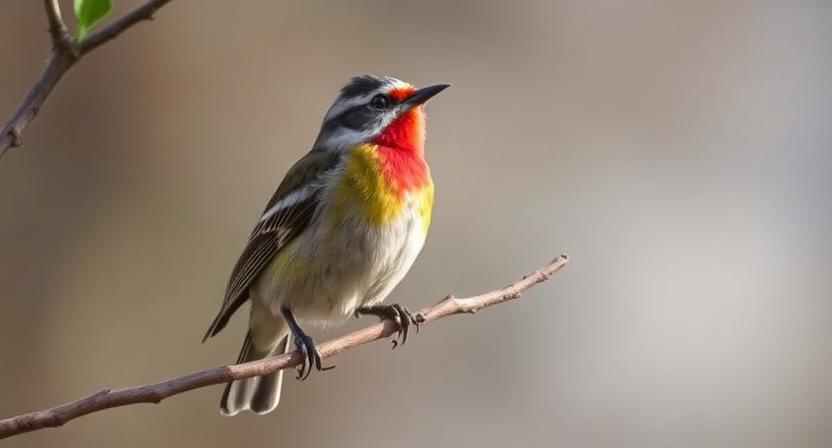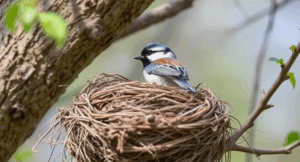
Why Do Birds Sing in the Morning?
The Natural Rhythm of Bird Songs
Bird songs have a natural rhythm that is both captivating and intriguing. These melodies can be heard at various times of the day, but there is something special about the chorus that takes place in the morning. As the sun rises, birds from different species fill the air with their unique tunes, creating a symphony of sounds that is both harmonious and chaotic. This natural rhythm seems to be hardwired into the avian world, as if it is an innate instinct that drives them to sing at certain times.
The morning chorus of bird songs serves multiple purposes in the natural world. One of the primary functions is communication and territory marking. Through their melodic calls, birds are able to establish their presence, assert their dominance, and defend their territory from intruders. This natural rhythm of singing not only allows them to communicate with others of their kind but also helps them maintain their boundaries and ensure reproductive success. It is as if their songs serve as a musical language that enables them to convey important messages to fellow birds.
The Biological Purpose of Morning Singing
Birds have long been known for their melodious morning songs, which can be heard echoing through forests and urban neighborhoods alike. While these melodic serenades provide a pleasant backdrop to our early mornings, they serve a much deeper biological purpose. Morning singing plays a crucial role in communication and territorial marking among bird species.
One important function of morning singing is to establish and maintain territories. By singing at dawn, birds are able to vocalize their presence and assert their ownership over a particular area. This serves as a deterrent to other birds, signaling that the space is already claimed and defending against potential intruders. In this way, morning singing helps birds maintain a sense of security and ensure they have access to valuable resources within their territory, such as food and nesting sites.
Communication and Territory Marking
Bird songs serve a vital purpose in the world of avian communication. One significant function of morning singing is territory marking. By belting out their distinct melodies, birds announce their presence and establish ownership over a specific area. This vocal declaration serves as a clear signal to other birds, relaying the message, “This territory is already taken.” In this way, morning songs act as a natural boundary, preventing potential conflicts between neighboring birds and reducing the chances of resource competition.
Territory marking through morning singing is a means of communication that helps birds maintain and defend their preferred habitats. By vocalizing loudly and repetitively, birds establish a sonic boundary that can be heard from a distance. This strategy effectively deters other individuals from encroaching upon their territory. Additionally, bird songs convey information about the size, quality, and attractiveness of a particular habitat, indicating its suitability for nesting and foraging. Establishing and defending territories through morning singing plays a crucial role in maintaining the social structure and balance within bird populations.
Attracting Mates and Reproductive Success
Bird songs play a crucial role in attracting mates and ensuring reproductive success. Male birds use their unique vocalizations to capture the attention of potential mates and establish their territory. The complexity and clarity of a bird’s song are indicators of its overall health and fitness, making it an important factor in attracting a suitable partner.
During the mating season, male birds sing to advertise their presence and intentions to females. Their elaborate and melodic songs serve as a form of courtship display, demonstrating their genetic quality and ability to provide for offspring. The repertoire of songs a male bird possesses can also indicate his experience and age, influencing female choice. By demonstrating their vocal prowess, males increase their chances of attracting a high-quality mate, ultimately leading to reproductive success.
The Influence of Light and Temperature
Birds are highly sensitive to their environment, and the interplay between light and temperature greatly influences their singing behavior. Light serves as a critical cue for birds, triggering the onset and modulation of their morning chorus. As the sun rises and daylight gradually replaces darkness, birds perceive this change in light intensity as a signal to start their vibrant songs. This synchrony between light and bird singing indicates how closely birds are attuned to the natural rhythm of their surroundings.
Temperature also plays a crucial role in shaping the morning singing patterns of birds. Warmer temperatures stimulate the metabolic rate of birds, making them more energetically active and increasing their inclination to sing. In colder conditions, however, birds might delay their vocalizations until the temperature rises to a more comfortable level. Therefore, the relationship between temperature and bird singing highlights the intricate balance between physiological factors and environmental cues that guide their behavior.
The Connection Between Bird Singing and Sunrise
Birds are known for their melodic morning chorus, filling the air with a symphony of sound. This ritual of singing at sunrise is deeply connected to the natural occurrence of the rising sun. As the first rays of light touch the earth, it triggers a cascade of biological responses in birds, prompting them to burst into song. The connection between bird singing and sunrise is a fascinating interaction that highlights the intricate relationship between these creatures and their environment.
The timing of bird singing at the break of dawn is closely tied to the daily cycle of light and darkness. As the sun begins to rise, it brings a gradual increase in light intensity that triggers various physiological responses in birds. The changing light levels stimulate the release of hormones in their bodies, signaling the start of a new day and prompting them to sing. This phenomenon is not only intricately linked to the availability of light but also influenced by temperature changes during the early hours of the morning. Together, these factors contribute to the formation of a unique natural rhythm, as birds harmonize their melodies with the rising sun.
The Role of Hormones in Morning Singing
As the sun rises and fills the sky with its warm glow, a symphony of bird songs fills the air. The melodious tunes that we hear are not merely a result of instinct or habit, but are also driven by the influence of hormones within the birds’ bodies. These hormones play a crucial role in regulating the timing and intensity of their morning singing.
One of the key hormones involved in morning singing is testosterone. In male birds, testosterone levels rise during the breeding season, leading to increased aggression and territoriality. This heightened territorial behavior includes singing, as male birds use their songs to establish and defend their boundaries. The presence of testosterone stimulates the vocal muscles, allowing the birds to produce louder and more complex songs, which in turn enhances their chances of attracting a mate. Thus, the role of hormones, specifically testosterone, in morning singing is not only tied to territoriality but also to reproductive success.
The Impact of Habitat and Seasonal Changes
Habitat and seasonal changes play a crucial role in shaping the morning singing of birds. Different habitats offer distinct resources and environmental conditions, which in turn influence the behavior of bird species. In habitats with diverse vegetation and abundant food sources, birds tend to have more varied and complex songs. This is believed to be attributed to the increased opportunities for birds to learn and imitate a wide range of sounds.
Furthermore, seasonal changes, such as variations in light and temperature, also impact the morning singing of birds. As the days get longer and warmer, birds tend to begin their morning chorus earlier and become more active. This is especially noticeable during the breeding season when the prime goal of male birds is to attract mates and defend territories. The changing seasons prompt an increase in hormonal activity within birds, triggering changes in their behavior, including morning singing. Thus, habitat and seasonal changes contribute significantly to the patterns and intensity of bird vocalizations during the early hours of the day.
Differences in Morning Singing Among Bird Species
Some bird species are known for their complex and melodious songs, often containing a wide range of notes and musical phrases. These species display a remarkable level of vocal flexibility and have the ability to mimic other birds and even human sounds. Examples of such skilled songsters include the mockingbird, nightingale, and thrush. On the other hand, there are bird species that have simpler and more repetitive songs. These species tend to have fewer vocalizations and utilize a limited number of phrases in their morning singing. Sparrows and finches are common examples of birds with comparatively simple songs.
The duration and intensity of morning singing also vary among bird species. Some birds start singing as soon as the first rays of sunlight appear, while others may take some time to warm up before joining in the chorus. Additionally, some species have a more subdued and quiet morning song, while others are known to deliver powerful and high-pitched melodies that can carry over long distances. These differences in the morning singing habits among bird species highlight the diversity and individuality within avian populations and further emphasize the importance of vocal communication in their lives.
The Significance of Morning Chorus for Bird Populations
Bird populations play a vital role in the health and balance of ecosystems. The morning chorus, the collective singing of birds at dawn, contributes significantly to the overall well-being and survival of these populations. This daily ritual serves as a crucial communication tool among birds, allowing them to establish territories, attract mates, and ensure reproductive success.
One of the primary functions of the morning chorus is territory marking. Birds use their songs to establish and defend their breeding territories, sending clear signals to other individuals of their species that certain areas are already occupied. By doing so, they minimize conflicts and competition for resources, ultimately fostering better survival rates for themselves and their offspring. Through this vocal declaration of ownership, birds establish a sense of order and hierarchy within their populations, contributing to the overall stability and coexistence of various species.


